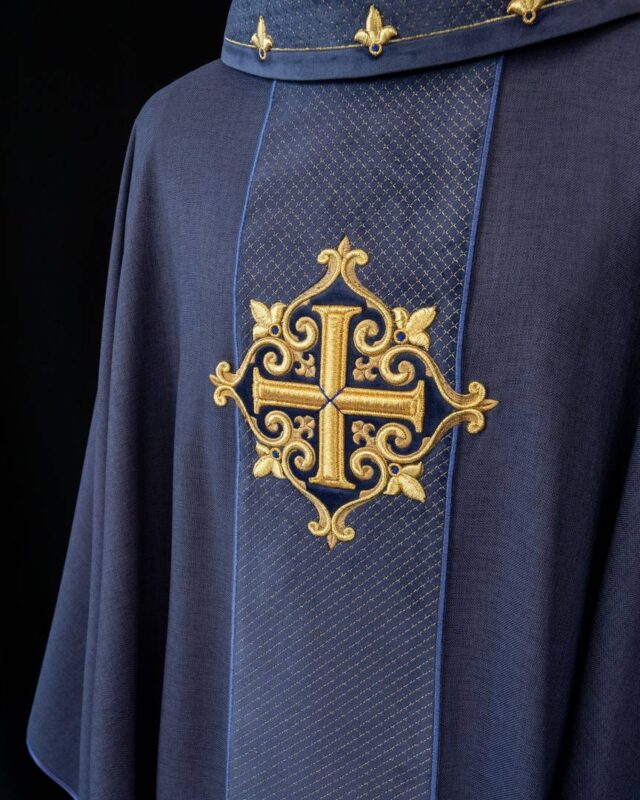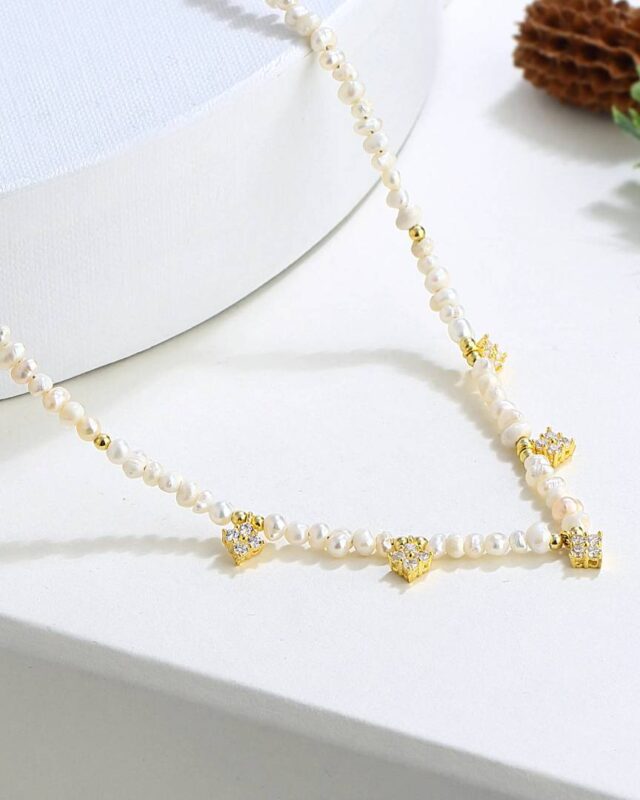Henna tattoos, also known as mehndi, have a rich history and cultural significance that dates back thousands of years. Originating from ancient civilizations in the Middle East, North Africa, and the Indian subcontinent, henna tattoos have become a popular form of body art, not only in their regions of origin but also across the globe. In this article, we will delve into the intricate origins and traditions surrounding henna tattoos, shedding light on their cultural significance.
Henna, scientifically known as Lawsonia inermis, is a flowering plant native to regions with hot climates. The leaves of the henna plant contain a natural dye molecule called lawsone, which imparts a reddish-brown stain when applied to the skin. This staining property has been utilized for centuries to create intricate designs on various parts of the body. The origins of henna tattoos can be traced back to ancient Egypt, where they were believed to symbolize good luck, protection, and blessings. The practice of applying henna as a form of adornment spread across the Arabian Peninsula and into the Indian subcontinent, where it became an integral part of traditional ceremonies and celebrations. In many cultures, henna tattoos are commonly associated with weddings and other joyous occasions. They are seen as a way to beautify the bride and express good wishes for her future. Elaborate henna designs are applied to the hands and feet of the bride, often incorporating intricate patterns and symbolic elements that reflect her cultural heritage. The application of henna tattoos is also deeply rooted in cultural and religious traditions. In Hinduism, henna is used during festivals and auspicious occasions such as Diwali and Karva Chauth. Similarly, in Islamic traditions, henna is applied during Eid al-Fitr and Eid al-Adha, as well as weddings and other festive events. The intricate patterns created with henna often include symbols representing fertility, prosperity, and protection against evil spirits. The process of applying henna tattoos, known as mehndi, is an art form in itself. Skilled henna artists use a cone or a brush to carefully draw intricate patterns on the skin.
These patterns can range from delicate floral motifs to geometric designs, and they often require a steady hand and a keen eye for detail. The henna paste is left to dry on the skin, and over time, the lawsone in the dye penetrates the top layers, leaving behind a beautiful temporary tattoo that lasts for about one to three weeks. Henna tattoos have gained significant popularity in recent years, transcending cultural boundaries and becoming a form of self-expression for people around the world. They have become a common sight at music festivals, parties, and other social gatherings, where individuals choose henna as a temporary alternative to permanent tattoos. In addition to their aesthetic appeal, henna tattoos hold a deeper cultural significance. They serve as a reminder of tradition, heritage, and the interconnectedness of different cultures. By embracing henna tattoos, individuals can pay homage to the ancient art form and appreciate the beauty and diversity of the cultures from which it originated. In conclusion, henna tattoos have a rich origin and cultural significance that spans across centuries and continents. From their ancient roots in the Middle East and India to their widespread popularity in modern-day society, henna tattoos continue to captivate people with their intricate designs and symbolic meanings. Whether worn during weddings, religious festivals, or simply as a form of personal expression, henna tattoos serve as a testament to the beauty of cultural traditions and the universal language of art.
Where did henna tattoos originate? Unveiling the ancient roots of this body art
Henna tattoos, also known as mehndi, have captivated people around the world with their intricate designs and rich cultural history. These temporary body art creations, characterized by their reddish-brown hue, have become increasingly popular in recent years. But where did henna tattoos originate, and what are the ancient roots of this captivating art form? Let’s delve into the fascinating origins and traditions behind henna tattoos. The origins of henna tattoos can be traced back thousands of years to the ancient civilizations of Egypt, India, and the Middle East. The use of henna paste as a dye and body decoration can be found in historical records and artifacts, providing valuable insights into its early practices. In ancient Egypt, henna was believed to possess magical properties and was used in various rituals and ceremonies. The Egyptians adorned their bodies with henna designs during important celebrations, such as weddings and religious festivals.
These intricate patterns symbolized joy, fertility, and protection from evil spirits. Across the Arabian Peninsula and the Indian subcontinent, henna became deeply ingrained in cultural traditions. It was commonly used to decorate the hands and feet of women for special occasions, such as weddings and festivals. The elaborate henna patterns reflected the region’s rich cultural heritage, with motifs inspired by nature, geometric shapes, and traditional symbols. The application of henna tattoos involves intricate techniques and a deep understanding of the art form. The henna paste is derived from the leaves of the henna plant, scientifically known as Lawsonia inermis. The leaves are dried, crushed, and mixed with other natural ingredients, such as lemon juice and essential oils, to create a smooth and malleable paste. This paste is then carefully applied to the skin using a cone or brush, allowing the dye to stain the top layers. The dyeing process is not immediate; it requires time for the henna to bind with the keratin in the skin. The longer the henna paste remains on the skin, the darker and more long-lasting the resulting stain will be. Traditionally, the paste was left on overnight and removed the next morning, revealing a beautiful reddish-brown design that could last for several weeks.
Beyond its aesthetic appeal, henna tattoos hold great cultural significance. They are not merely decorative but often convey messages and reflect the wearer’s identity and beliefs. In Indian culture, the intricate henna designs on a bride’s hands symbolize the blessings of the gods and the bond of matrimony. The motifs may also incorporate elements specific to the bride’s community or region, further highlighting the diversity and richness of Indian traditions. As henna tattoos gained global popularity, their designs and techniques evolved to encompass a wide array of styles and inspirations. Contemporary henna artists often fuse traditional motifs with modern influences, creating unique and personalized designs that cater to individual preferences. Henna has become a form of self-expression, a way for people to celebrate their heritage or simply adorn their bodies with beautiful temporary art. In conclusion, the ancient roots of henna tattoos can be found in the historical practices of ancient civilizations such as Egypt, India, and the Middle East. From their magical properties in ancient Egypt to the elaborate designs of Indian weddings, henna tattoos have stood the test of time and continue to captivate people worldwide. Through the skillful application of henna paste, the hands and feet become canvases for intricate designs that reflect cultural traditions and personal expression. As we embrace the beauty of henna tattoos today, we honor the rich heritage and enduring allure of this ancient body art form.

What are the cultural and traditional associations of henna tattoos?
The cultural and traditional associations of henna tattoos encompass a rich heritage and symbolism that spans across various regions and time periods. Henna, scientifically known as Lawsonia inermis, is a natural dye derived from the leaves of the henna plant. It has been utilized for centuries in different cultures for body art, particularly in the form of temporary tattoos. One of the earliest known references to henna tattoos can be traced back to ancient Egypt, where it was believed to be associated with blessings, protection, and fertility. The art of applying henna, known as mehndi, was prevalent during wedding ceremonies and religious festivals. The intricate and elaborate designs symbolized joy, love, and auspiciousness, serving as a form of celebration and adornment. Moving to the Indian subcontinent, henna holds great cultural significance. Mehndi is an integral part of weddings and other festive occasions. In Hindu weddings, the bride’s hands and feet are adorned with intricate henna patterns, depicting various symbolic elements.
These designs often include representations of the sun, moon, peacock, lotus, and paisley motifs, each carrying its own cultural significance. The darkening of the henna color is believed to signify the strength of the love between the couple and brings good fortune to their union. In Islamic traditions, henna holds a special place. During Eid celebrations and weddings, henna is applied as a form of decoration and blessing. It is believed to bring protection, ward off evil, and bring good luck. The Prophet Muhammad is said to have used henna, and it is mentioned in Islamic texts as a recommended practice. Henna tattoos also have cultural associations in North Africa, particularly in Morocco and Tunisia. They are often used to celebrate religious festivals and important life events. The designs in these regions are characterized by geometric patterns and symbols representing fertility, luck, and protection against the evil eye. Additionally, henna is used in certain ceremonies to commemorate transitions such as childbirth and coming of age.
The cultural and traditional associations of henna tattoos extend beyond the regions mentioned above. They have gained popularity worldwide and are appreciated for their artistic beauty and cultural diversity. Today, henna tattoos are not only limited to specific cultural events but are also embraced as a fashion statement and a form of self-expression. In conclusion, the cultural and traditional associations of henna tattoos are deeply rooted in the customs, beliefs, and celebrations of various cultures. From ancient Egypt to India, from Islamic traditions to North African customs, henna tattoos hold symbolic meanings of joy, love, protection, fertility, and good fortune. As a cherished art form, they continue to captivate individuals worldwide, serving as a bridge between cultures and a testament to the enduring beauty of human traditions.

Exploring the symbolism behind henna designs: What do they represent?
Henna designs, known for their intricate patterns and rich cultural history, hold a significant place in various traditions and celebrations across many regions of the world. These mesmerizing designs, created using henna paste derived from the Lawsonia inermis plant, have long been admired for their aesthetic appeal. However, beyond their visual allure, henna designs also carry deep symbolism that adds layers of meaning to their artistic expression. The art of adorning the body with henna has a rich heritage, dating back thousands of years. Henna designs, also referred to as mehndi, have their roots in ancient cultures, particularly in regions like India, the Middle East, and North Africa. Throughout history, these designs have served as a form of body art, a means of self-expression, and a symbol of cultural identity.
One of the fundamental aspects of henna designs is their symbolic representation of fertility and auspiciousness. In many cultures, henna is applied on the hands and feet of brides before their wedding ceremonies as a symbol of blessings and good luck. The intricate motifs, such as flowers, paisley patterns, and abstract geometric shapes, are believed to ward off evil spirits and bring prosperity to the newlyweds. Moreover, henna designs often incorporate various symbols that hold specific meanings within different cultures. For instance, the peacock, a common motif in Indian henna art, represents beauty, grace, and love. The lotus flower, another popular symbol, signifies purity, enlightenment, and spiritual growth. These symbols are carefully incorporated into the design, conveying profound messages and cultural values. In addition to representing positive qualities and aspirations, henna designs can also convey deeper emotions and personal narratives. Many individuals choose specific patterns or motifs that hold personal significance to them. For example, a henna design featuring a butterfly might symbolize transformation, freedom, and rebirth for someone going through a significant life change. Similarly, a henna design depicting a tree might represent strength, rootedness, and connection to one’s heritage. Furthermore, henna designs often reflect the surrounding natural environment, drawing inspiration from flora and fauna.
These elements can vary depending on the geographical location and cultural context. In desert regions, henna designs may incorporate motifs like camels or palm trees, symbolizing resilience and survival in harsh conditions. In contrast, henna designs from tropical regions might feature tropical flowers and lush foliage, symbolizing abundance and vitality. The symbolic significance of henna designs extends beyond individual expressions to communal and societal bonds. Henna nights, also known as mehndi ceremonies, bring together families and friends to celebrate special occasions. These gatherings foster a sense of unity, love, and cultural continuity. Applying henna during such occasions symbolizes the coming together of individuals and the strengthening of relationships. In conclusion, henna designs encompass a wealth of symbolism and cultural significance. Beyond their visual appeal, these intricate patterns represent fertility, auspiciousness, personal narratives, and cultural values. They serve as a means of self-expression, a celebration of traditions, and a way to convey profound emotions. The incorporation of symbols and motifs within henna designs adds layers of meaning, reflecting individual beliefs, collective identities, and the beauty of the natural world.

How has the tradition of henna tattoos evolved over time?
The tradition of henna tattoos has undergone a remarkable evolution over time, intertwining ancient cultural practices with modern artistic expressions. Henna, also known as Lawsonia inermis, is a plant native to regions such as North Africa, the Middle East, and South Asia. Its leaves contain a pigment called lawsone, which, when crushed and applied to the skin, leaves a reddish-brown stain. Throughout history, henna has held deep cultural significance in various communities. It has been used in celebrations, weddings, and religious ceremonies, symbolizing blessings, good luck, and protection against evil spirits.
The art of henna tattooing, or mehndi, has been passed down through generations, preserving traditional designs and techniques. However, the tradition of henna tattoos has evolved significantly, reflecting the influence of globalization, fashion trends, and technological advancements. One notable change is the expansion of henna’s reach beyond its original cultural boundaries. In recent decades, henna tattoos have gained popularity worldwide, transcending cultural borders and becoming a form of artistic expression embraced by individuals from diverse backgrounds. The evolution of henna tattoos can be attributed to several factors. First, the accessibility and ease of international travel have facilitated the exchange of ideas and cultural practices. As people from different parts of the world interacted and shared their traditions, henna tattooing became a part of the global cultural tapestry. Additionally, advancements in technology and social media platforms have played a pivotal role in the evolution of henna tattoos. Artists now have wider exposure and can showcase their intricate designs and techniques to a global audience. The internet has become a vast repository of henna patterns, tutorials, and inspiration, allowing artists and enthusiasts to learn from one another and experiment with new styles. The evolution of henna tattoos can also be observed in the artistic techniques and design choices.
While traditional henna designs are characterized by intricate floral and geometric patterns, contemporary henna tattoos have embraced a more diverse range of motifs. Artists incorporate elements from various cultures, incorporating symbols, animals, and even pop culture references into their designs. This fusion of styles has given rise to a vibrant and dynamic henna tattoo art scene. Furthermore, the availability of commercially prepared henna products has significantly influenced the evolution of henna tattoos. Ready-to-use henna cones and tubes with applicator tips have made the process more convenient and precise. This has allowed artists to create intricate designs with greater ease and consistency. In conclusion, the tradition of henna tattoos has evolved over time, adapting to the changing global landscape while preserving its cultural roots. From its origins as a symbol of cultural significance and celebration, henna tattooing has expanded its horizons to become a popular form of artistic expression worldwide. The interplay of cultural exchange, technological advancements, and evolving design trends has transformed henna tattoos into a dynamic and diverse art form, reflecting the ever-changing nature of human creativity.

Henna tattoos across different cultures: Discovering global variations and practices
Henna tattoos, also known as mehndi, have been a significant form of body art across various cultures throughout history. Originating from ancient Egypt and the Middle East, henna tattoos have traveled across continents, adapting and evolving to reflect the unique traditions and practices of each culture. This article aims to delve into the diverse variations and practices of henna tattoos across different cultures, highlighting their cultural significance and shedding light on their global appeal. One of the most prominent cultures associated with henna tattoos is South Asia. In countries like India, Pakistan, and Bangladesh, henna holds deep cultural and ceremonial significance. Henna is an integral part of weddings and festive occasions, where intricate patterns are applied to the hands and feet of brides and guests. These patterns, often characterized by delicate floral motifs and elaborate designs, symbolize joy, luck, and auspiciousness. The application process itself involves skilled henna artists who meticulously create these intricate designs using cones or applicator bottles, resulting in stunning temporary body art.
Moving to North Africa, particularly Morocco and Egypt, henna tattoos have their own distinctive characteristics. Here, henna is traditionally used to decorate the hands and feet of brides during pre-wedding ceremonies. The designs are known for their geometric patterns and bold lines, often encompassing symbols of fertility, protection, and warding off evil spirits. Moroccan henna designs may also incorporate cultural motifs such as the “khamsa” or the “hand of Fatima,” which is believed to bring good luck and protection against the evil eye. In the Arabian Peninsula, henna plays a significant role in celebrations and cultural events. In countries like Saudi Arabia, Yemen, and the United Arab Emirates, henna is applied to women’s hands and feet during weddings and religious festivals. The designs are typically intricate and feature elaborate floral and geometric patterns, showcasing the skill and expertise of henna artists. Additionally, henna is also used as a means of personal adornment and self-expression in these regions, with women opting for henna designs for special occasions or even as a regular beauty ritual. Crossing over to the Western world, henna tattoos have gained popularity as a temporary body art form. Embraced by individuals seeking unique and non-permanent tattoo options, henna designs can be found in various cultural festivals, art exhibitions, and even mainstream fashion events. Henna artists, often inspired by the traditional motifs and patterns, have adapted their techniques to cater to a more diverse audience.
This has resulted in the emergence of fusion styles that combine elements from different cultures, creating a vibrant blend of artistic expression. The widespread appeal of henna tattoos can be attributed to their cultural richness and versatility. Whether it’s the intricate and symmetrical designs of South Asia, the bold and geometric patterns of North Africa, or the elaborate and delicate motifs of the Arabian Peninsula, henna tattoos encapsulate the essence of diverse cultures and their artistic traditions. Moreover, the use of natural henna paste, derived from the Lawsonia inermis plant, adds to their appeal as a safe and temporary alternative to permanent tattoos. In conclusion, henna tattoos have transcended borders and become a global phenomenon, representing the beauty and diversity of different cultures. From South Asia to North Africa and the Arabian Peninsula, each region has contributed unique variations and practices to the art of henna tattoos. Their significance in celebrations, ceremonies, and personal adornment showcases the rich cultural heritage and artistic expressions of these societies. As henna continues to captivate people worldwide, it serves as a reminder of the interconnectedness of global cultures and the power of body art as a form of self-expression.

Modern-day popularity: Why are henna tattoos beloved by people around the world?
Henna tattoos have gained immense popularity in recent years, captivating people from diverse cultural backgrounds across the globe. The allure of these intricate temporary designs has transcended borders and become a beloved form of body art. This article delves into the modern-day popularity of henna tattoos and explores the factors that have contributed to their widespread adoration. One of the primary reasons for the global appeal of henna tattoos is their cultural richness and historical significance. Henna, derived from the plant Lawsonia inermis, has been used for centuries in various traditions and rituals.
Originating in ancient Egypt, henna artistry has been deeply embedded in cultural practices of countries such as India, Pakistan, Morocco, and many others. By adorning themselves with henna, individuals not only embrace the beauty of the intricate patterns but also connect with the traditions and heritage of these cultures. Furthermore, henna tattoos have gained traction due to their temporary nature. Unlike permanent tattoos, henna designs fade over time, typically lasting for a few weeks. This transient quality allows individuals to experiment with different designs and placements without long-term commitment. People can adapt henna tattoos to match their evolving style or commemorate special occasions, such as weddings, festivals, or celebrations. The temporary nature of henna tattoos also appeals to those who may be hesitant about permanent body art, providing a safe and non-permanent alternative for self-expression. Another aspect that contributes to the popularity of henna tattoos is their versatility and customization options. Skilled henna artists can create intricate and personalized designs that cater to individual preferences. Whether it’s delicate floral motifs, geometric patterns, or cultural symbols, henna tattoos offer endless possibilities for self-expression and creativity. Moreover, henna can be applied to various body parts, including hands, feet, arms, and even back, providing individuals with the flexibility to choose the canvas for their temporary artwork. In recent years, henna tattoos have also become a fashion statement, making their way into mainstream culture. Celebrities, social media influencers, and fashion icons have been spotted flaunting henna designs, thereby fueling its popularity.
Henna tattoos have been prominently featured in fashion shows, music videos, and red carpet events, further cementing their status as a trendy and desirable form of body art. Additionally, the rise of social media platforms and the internet has played a significant role in spreading the love for henna tattoos. Instagram, Pinterest, and other image-sharing platforms have become a hub for henna enthusiasts to showcase their stunning designs, inspire others, and explore new trends. The accessibility of tutorials, blogs, and online communities has empowered individuals to learn about henna application techniques, discover unique designs, and connect with fellow enthusiasts worldwide. The online presence of henna art has undoubtedly contributed to its widespread popularity and made it easily accessible to people across geographical boundaries. In conclusion, the modern-day popularity of henna tattoos can be attributed to their cultural significance, temporary nature, versatility, influence from popular culture, and the power of social media. These factors have propelled henna tattoos into the mainstream, captivating individuals around the world with their intricate beauty and rich heritage. Whether as a form of self-expression, celebration, or fashion statement, henna tattoos continue to captivate and charm people from diverse backgrounds, showcasing the enduring appeal of this ancient art form in the contemporary world.






















Great writing! Your post is full of interesting information and inspiring ideas.